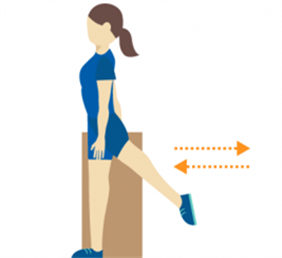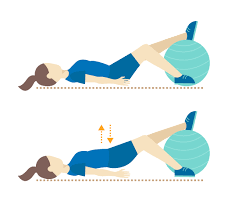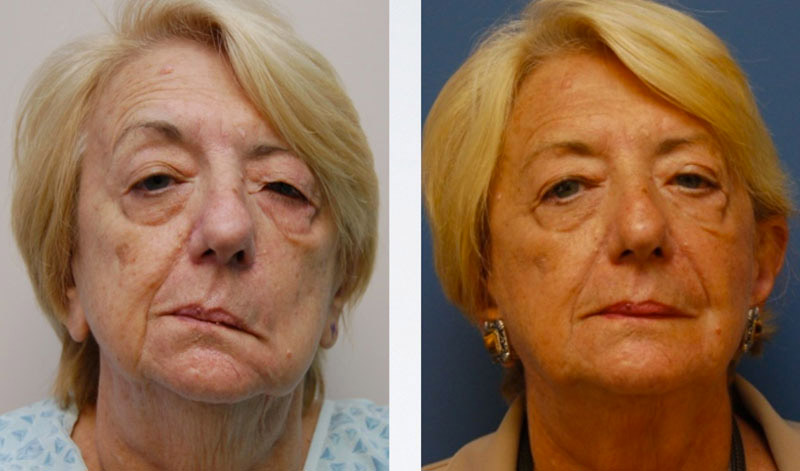Stroke recovery can be a long and complicated process. It will be difficult to rebuild bodily control and strength after a stroke. How much help you need usually depends on the extent of neurological damage you may have suffered. Loss of balance and control are usually the most common issues you will be experiencing during your stroke recovery phase. You may consider receiving outpatient recovery therapy, but you can also learn some rehabilitation exercises to accelerate recovery.
Stroke Rehabilitation Exercises
1. Standing and Balance

Most people lose coordination and balance after a stroke, which makes simple actions like walking and standing difficult. This usually results in the weakness of the muscles on the exterior of your hip area. The following exercises may greatly improve your balance and coordination:
- Basic Level Standing and Balance Exercises
Stand upright and hold on to a stable surface for support. Transfer the weight of your body on one leg and swing the other leg to your side. Maintain balance and continue the movement for 10 seconds. Lower your back slowly and continue the movement. Switch legs and repeat.
- Intermediate Standing and Balance Exercises
After doing the first exercise for some time, you should try the intermediate level of the same exercise in which you get in the same position but bring your leg up right in front of you instead of swinging it from side to side. Be sure to bend your knee slowly as you bring your leg up. Hold your position for about 10 seconds and then return to the starting position. Repeat the same with your other leg.
- Advanced Standing and Balance Exercises
The advanced level of the same exercise involves getting in an upright position with your weight transferred to one leg only. Now, swing your other leg out behind you and hold the position for 10 seconds. Try to lower your leg back down slowly. Repeat the same with your other leg.
2. Bridging

It is quite common for your core muscles and hips to become weak after a stroke. You can strengthen these muscles through bridging exercises. Here is what you should be doing.
- Basic Bridging Exercise
Lie down with a pillow placed under your knee joint. Now, slowly press your back into the pillow to lift your heel off the floor. Maintain that position for a while and return to the starting position.
- Intermediate Bridging Exercise
Lean against the wall with your feet placed in front of you. Use the wall to support your back and body weight, and then bend your knees slowly to lower your body down toward the floor. Hold the position for about 10 seconds and then slide back up while using the wall for support.
- Advanced Bridging Exercise
The advanced version of bridging exercise involves keeping a gym ball between the wall and your body. It means you should use the gym ball for support while bending your knees to get into the squat position.
3. Shoulder Exercises

You can try certain shoulder stroke rehabilitation exercises to strengthen your shoulder muscles. Here is an exercise that you should be doing a couple of times a day, preferably in the morning and at bedtime for improvement.
- Lie on your back and keep your arms at your sides.
- With your elbow perfectly straight, lift your affected arm to the level of your shoulder with your hand pointing to the ceiling.
- Lift your hand up toward the ceiling while lifting your shoulder blade from the floor. Hold the position for 3-5 seconds and return to the starting position.
- Repeat the same 10 times.
4. Elbow Exercise

You can try this exercise to help strengthen the muscle that controls the movement of your elbow. It helps straighten your elbow properly. Perform this exercise at least twice a day.
- Sit on the floor and place a firm pillow under your elbow with your palm facing down.
- Slowly put some weight onto the bent elbow while making sure you do not lose your balance.
- Straighten your elbow while pushing your hand down against the support surface. Maintain an upright position all the time.
- Bend your elbow slowly while returning your forearm to the support surface.
5. Knee Exercise

It is one of the best stroke rehabilitation exercises to improve the motions of the knee for walking. Perform the exercise at least twice a day.
- Get on the floor and lie on your unaffected side. Bend your knee for added support and stability. Place your affected arm in front for support.
- Bend your affected knee and slowly bring your heel towards your buttocks. Slowly straighten your leg again.
- Repeat the same movements while making sure your hip stays straight.
6. Facial Exercises

You can also find many stroke rehabilitation exercises that help improve your facial expressions. With every exercise, your focus should be on the brain-muscle connection. Here are some suggestions:
- Smiling: All you have to do is smile, or at least try to smile. Do not show your teeth at first. Then, try to smile again while showing your teeth. Part your lips slowly while trying to smile. Then, pucker your lips as if you are going to blow a kiss. Make sure to use equal muscle strength while working on different sides of your face.
- Vowel Sounds: You are more likely to experience language impairments after a stroke, and the best way to overcome them is to start making vowel sounds first. You have to speak each vowel sound with full force. This engages the muscles around jaw and lips. Make sure to exaggerate each sound and try to get the correct lip movement.
- Eyebrows: A stroke may lead to a dysfunction called Bell's palsy that results in loss of facial muscle control. At first, you should start by raising and lowering your eyebrows in a slow, controlled rhythm. Then, raise your eyebrows as high as you can and hold the position for 10-15 seconds. Repeat several times.
- Eyes: By exercising your eyes, you will also be exercising your facial muscles. Start by opening and closing your eyes in a slow, controlled fashion, and make sure you do not move your brows. Then, close your affected eye slowly without letting your lips move upward or brows move downward. Winking may also help improve facial expressions.
- Nose: Start by wrinkling your nose and then sniffle. Next up, flare your nostrils forcefully and then hold the position for as long as you can. Repeat several times daily.
